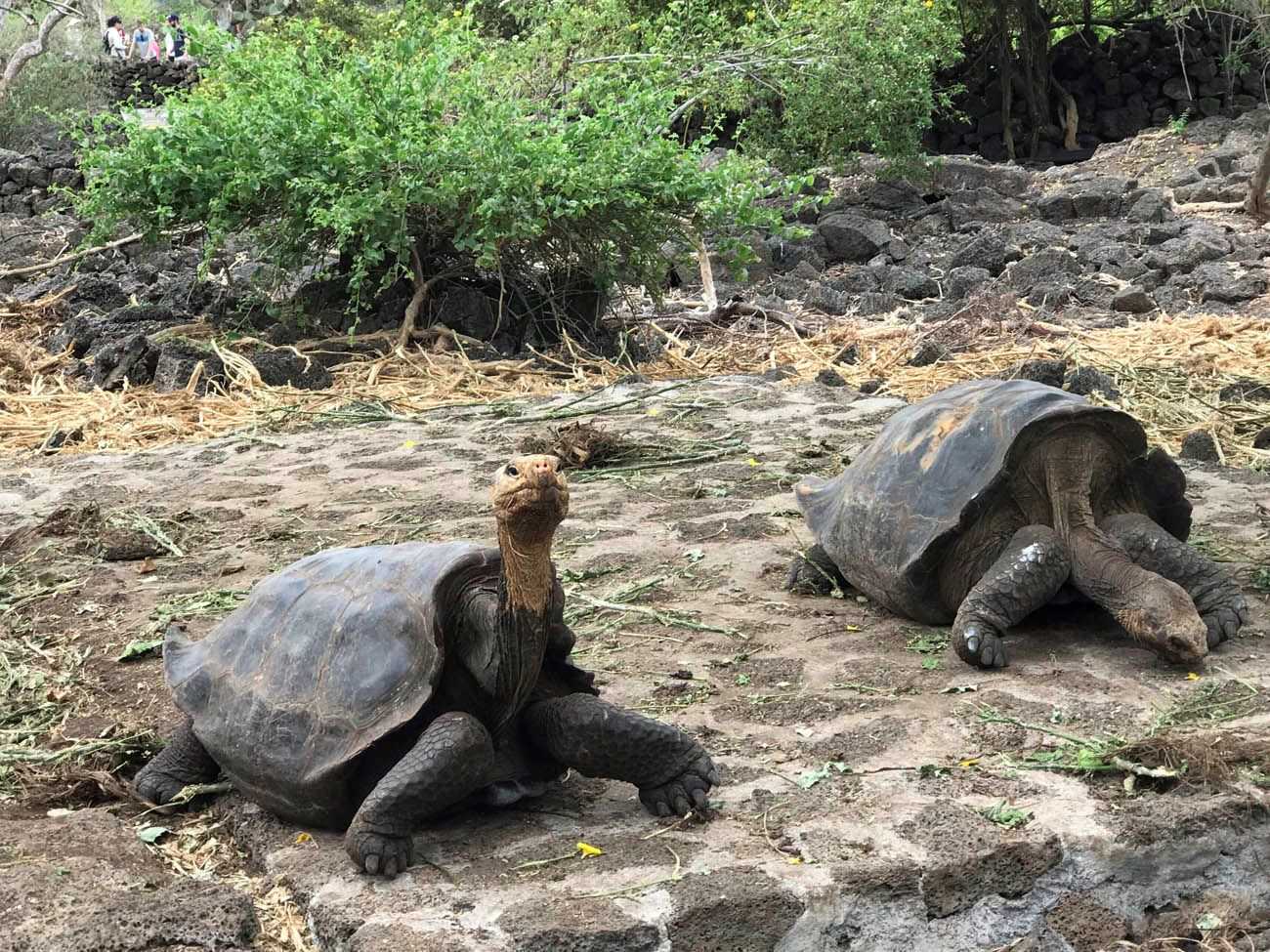One of the most iconic animals in Galapagos are the giant tortoises. These well-admired animals were the origin of the name of the archipelago. Their history has been a sad one—during the period when pirates and later on whalers were frequenting this area, tortoises were considered to be a great food source. Many tortoises were removed from the islands, and in some cases this activity brought a couple of species to extinction, and others all too near that verge.
In the 1960s, a group of concerned, hard-working scientists, and park personnel began a monumental task. They wanted to breed tortoises in captivity, setting up a project that not only succeeded but also surpassed their expectations. The project began on Santa Cruz Island, in a then small village known as Puerto Ayora. Nowadays this is the largest town in the archipelago, and the project has only flourished, and joining it, we have the breeding centers of Isabela and San Cristobal Islands.
Currently at the breeding center in Puerto Ayora, we have more than 1,400 tortoises. This is the first stopover we made this morning when we went to see baby and adult tortoises. Beyond the aspect of conserving what we have, there is also the commitment we all have to the future the islands. Galapagos giant tortoises do by subsistence the same work landscapers do with their hands; that is dispersal, by way of digestion, seeds that may not otherwise be sufficiently spread about.
We also had a great opportunity to see them in the wild, at a farm that lies next to the tortoises reserve. This is the easiest place to find them. It was a privilege to sit for some time and enjoy observing them while feeding or just relaxing under the shade of trees. Galapagos and the Aldabra Atoll are the only two places in the world where we can find wild giant tortoises roaming free; everywhere else they are extinct.
We are all happy to see that these giants have a better future, as people are becoming more aware and interested in preserving places like this.







